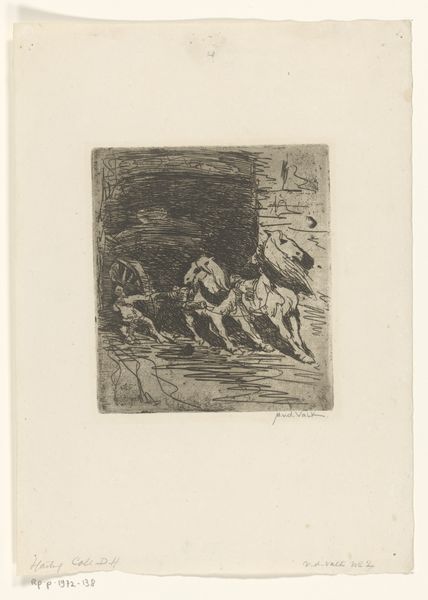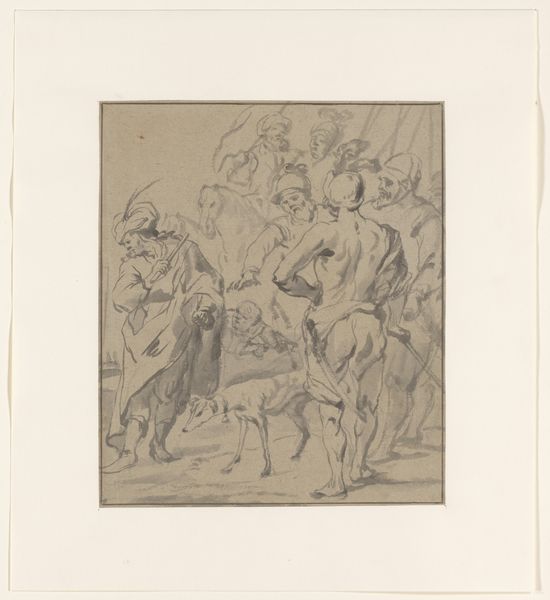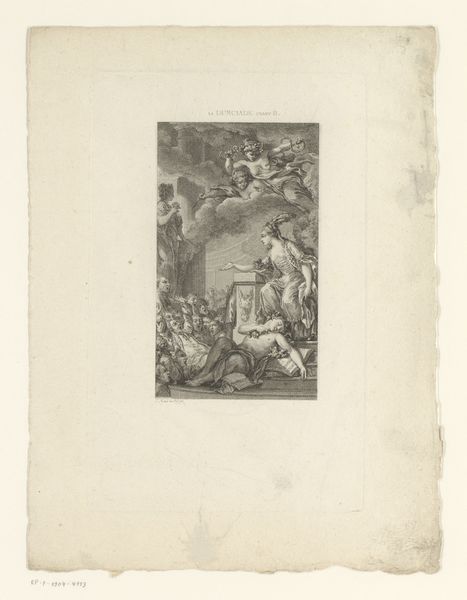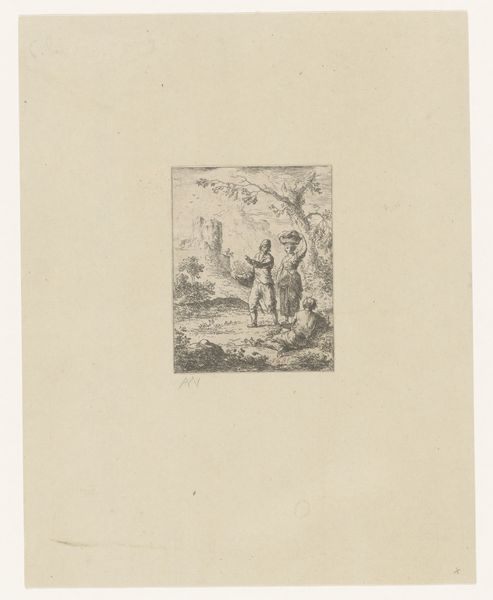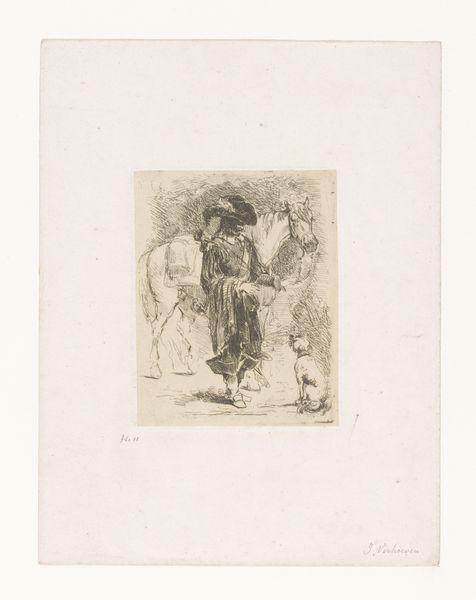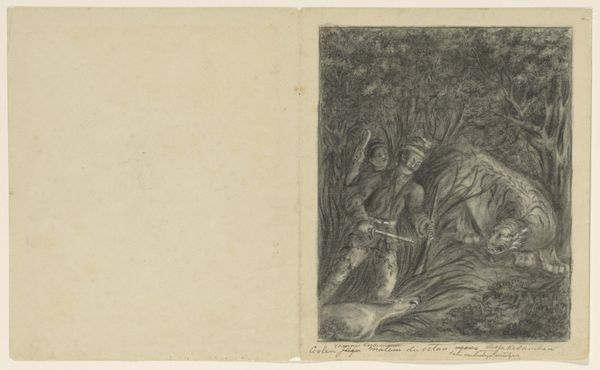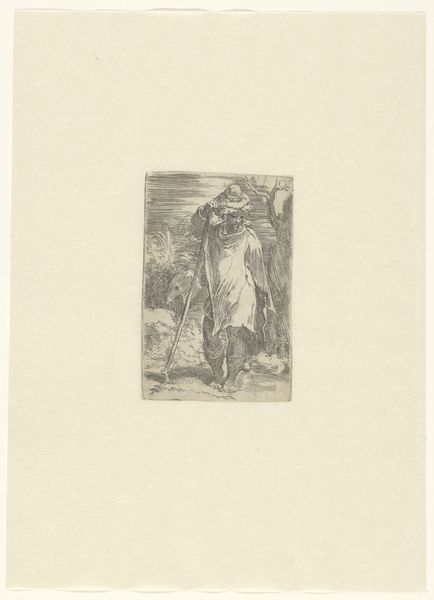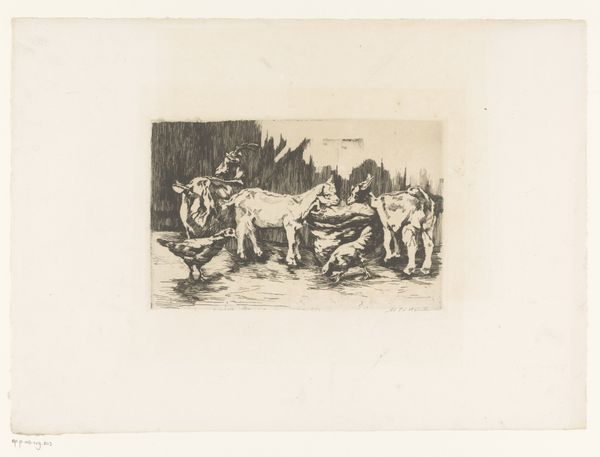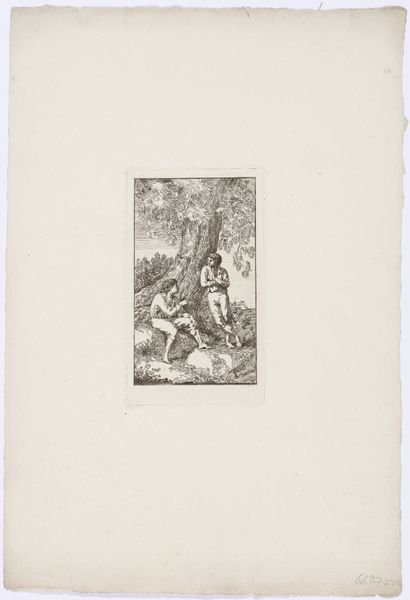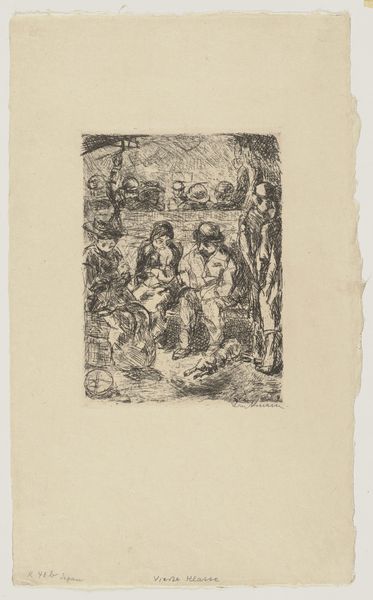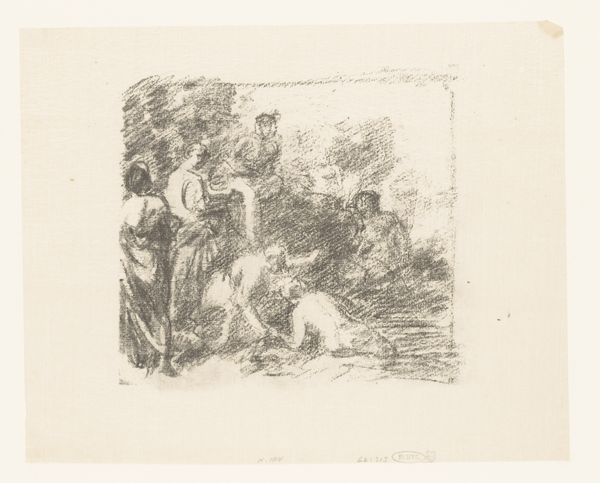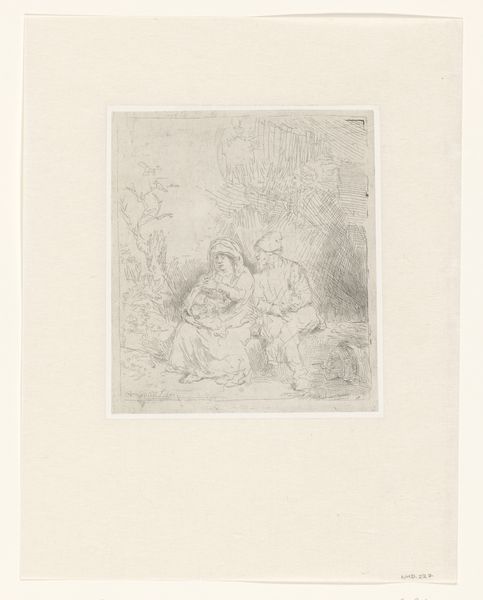
drawing, print, etching
#
drawing
# print
#
etching
#
landscape
#
group-portraits
#
symbolism
#
genre-painting
#
realism
Dimensions: height 239 mm, width 178 mm
Copyright: Rijks Museum: Open Domain
Editor: Here we have Eugène Laermans’ “Landarbeiders op een veld met hooioppers” or “Farmworkers in a Field with Haystacks,” an etching from 1891. It depicts a group of labourers, seemingly resting in a field, but something about it feels quite somber and even a little tense. What catches your eye when you look at it? Curator: The subject matter itself, the portrayal of laborers, speaks volumes about the socio-political climate of the late 19th century. Realism gained traction as artists turned their attention to depicting everyday life, especially the working class. Given Laermans’ known social realist stance, how do you think this etching engages with prevailing notions of labor and class? Editor: Well, it certainly doesn't romanticize it. The figures seem weary and worn. It makes me think about the social conditions that gave rise to socialist movements. It doesn’t strike me as glorifying peasant life; it's more like an observation. Curator: Precisely. Laermans isn’t just showing us laborers, he's inviting us to contemplate their social standing. Also, consider the medium—etching. Etchings allowed for relatively easy reproduction and dissemination. Who do you think would have been the audience for a print like this, and what effect might it have had on them? Editor: Perhaps a middle-class audience who may have been unaware of the lives of the working class, and to ignite discussions on labour reforms? The muted tones and the figures’ downward glances also suggest an intent beyond mere depiction; a commentary maybe? Curator: Absolutely. Prints like these could circulate amongst different social classes. It challenges us to think about the role of art in shaping social consciousness. Laermans compels the viewer to reckon with the lived experiences of those who toil, thus fostering dialogue. Editor: I never thought about art having such influence at that time. Curator: Artworks can be seen as both a product and a force, shaping the social narratives. It serves as both a reflection of a given era, and influence in future socio-political movement. Editor: That's really given me a new appreciation for what this artist achieved here. Thanks for the insight.
Comments
No comments
Be the first to comment and join the conversation on the ultimate creative platform.
